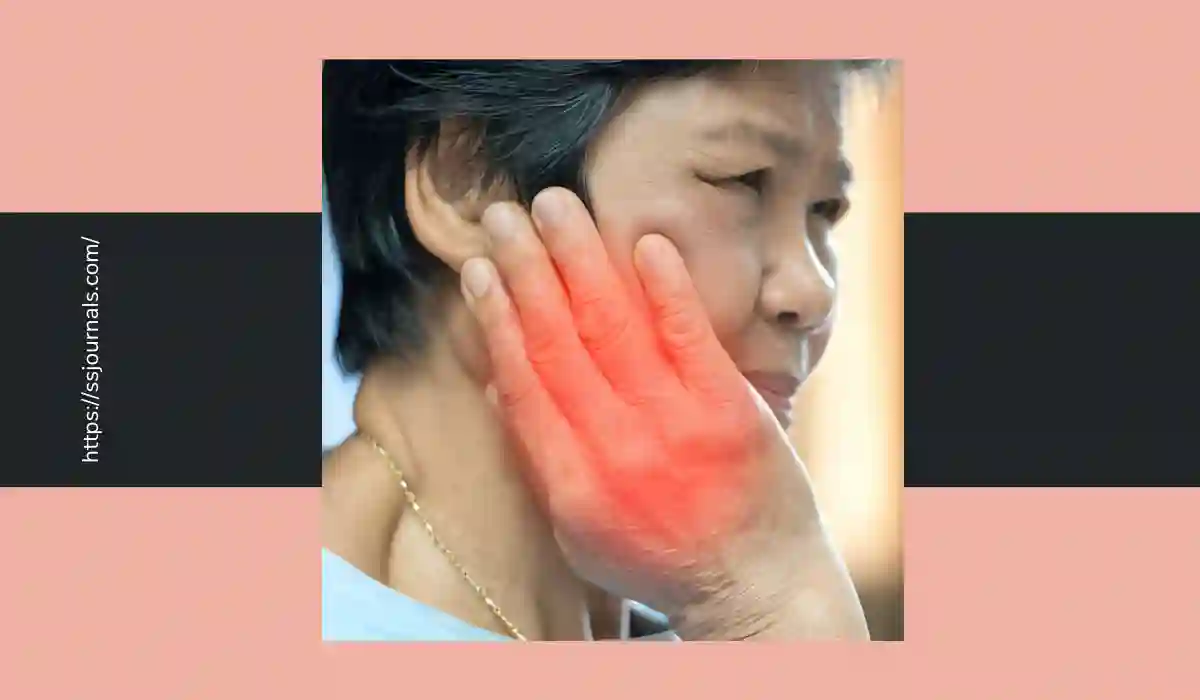Experiencing pain in your teeth or jaw can be agonizing, making it difficult to pinpoint the exact cause. TMJ tooth pain often gets mistaken for a common toothache. However, while they may feel similar, the underlying causes and ideal treatments can differ. Understanding the differences between TMJ disorder and standard tooth pain enables faster diagnosis and more effective relief.
TMJ (temporomandibular joint) disorder refers to conditions affecting the temporomandibular joint and muscles used for chewing. As the disorder progresses, inflammation and deterioration can cause the joint to rub against tissue and nerves. It will provoke pain that feels like tooth sensitivity or ache. TMJ tooth pain may also stem from muscle spasms and tension in the jaw and neck areas. Standard toothaches typically arise from issues confined to the teeth or gums. Some of the issues are cavities, infections, or trauma from grinding.
Distinguishing between TMJ tooth pain and regular dental problems allows dentists to provide appropriate care. Misdiagnosis can delay proper treatment, prolonging discomfort. This article will explore how to differentiate TMJ tooth pain from common toothaches based on symptoms and causes. We’ll also overview recommended treatment options for alleviating TMJ tooth pain.
Is It Tooth Pain or TMJ: How Can You Differentiate?

Temporomandibular joint (TMJ) disorder can cause tooth pain as it often results in muscle tension and inflammation in the jaw joint. This can lead to discomfort and pain that may radiate to the teeth. In some cases, TMJ disorder can also cause misalignment of the jaw, which can put pressure on the teeth and cause additional pain. If you are experiencing tooth pain as a result of TMJ disorder, it is important to consult with a dentist or a healthcare professional to determine the best course of treatment. This may include lifestyle changes, pain management techniques, or dental procedures to alleviate the pain and improve jaw. TMJ tooth pain can closely resemble tooth decay or infection. However, certain characteristics provide clues regarding whether the TMJ or typical dental issues are to blame. Paying attention to subtle differences in symptoms and timing can help discern the source.
Location of Pain
With TMJ disorder, pain frequently radiates from the jaw joint to the ears. It may feel like it’s coming from multiple upper and lower teeth rather than a single problematic tooth. Toothaches typically concentrate pain around one or two specific teeth.
TMJ also often causes pain near the temples, cheekbones, neck, and shoulders as it affects connecting muscles. Tooth pain tends to stay more localized around the mouth.
Pain Triggers
Chewing or using the jaw consistently aggravates TMJ tooth pain. Common toothaches flare up sporadically in reaction to stimuli like hot and cold foods. If the pain predictably worsens with eating or talking, TMJ involvement is likely. Keeping a symptom journal tracking exposures that increase pain can help identify patterns.
Timing of Symptoms
TMJ-related tooth sensitivity frequently comes and goes. It may disappear for a stretch and then recur. Toothaches from dental infections, cavities, or injuries persist continuously until treated. Pay attention to the consistency of pain episodes over an extended time frame.
Clenching and Grinding
These habitual jaw-tightening behaviors excessively load TMJ structures. The strain over time can erode joint tissues and compress nerves, eventually stimulating pain.
If you catch yourself clenching your jaw, especially at night, TMJ complications could underlie tooth sensitivity. Dentists may spot telltale signs like flattened tooth surfaces or impressions along the inner cheek.
What Is TMJ Disorder?
TMJ syndrome encompasses a group of progressive conditions disturbing proper temporomandibular joint function. The temporomandibular joint connects the jawbone to the skull. Along with the teeth, it facilitates vital activities like speaking, swallowing, chewing, and other mouth movements.
TMJ disorders arise primarily from displacement of the cartilage disc cushioning the jawbone and skull. Trauma, arthritis, muscle tension, and jaw misalignment can knock this disc out of position, allowing bone-on-bone grinding. The ensuing inflammation and degradation of joint components can compress local nerves, causing referred pain perceived around the teeth and facial region.
As TMJ dysfunction advances, surrounding muscles and ligaments also weaken and tighten. Muscle spasms and cramping provoke pain that feels similar to tooth sensitivity. Over time, these escalating TMJ symptoms severely hamper routine mouth functions.
Why Does TMJ Pain Cause Tooth Pain?
So, we already know the answer to “Can TMJ cause tooth pain?” is yes. So, let’s try to understand why TMJ pain causes tooth pain. Several anatomical reasons explain why TMJ complications often manifest as tooth sensitivity or aches:
Shared Nerves
The trigeminal nerve bundle supplying facial sensation gives off branches extending into TMJ tissues and structures around the upper and lower teeth. Damage to TMJ components can refer pain signals back to these common nerve pathways.
Inflamed Tissues
Distended, inflamed ligaments and tissues around the dysfunctional joint can impinge on nerves traveling to the teeth, causing sensitivity.
Muscle Spasms
TMJ muscles like the pterygoids or masseter can develop spasms and trigger points from overuse. These knots press on nerves that supply the upper and lower teeth.
Referred Pain
Nerves around the distressed joint become hypersensitive and fire erratically, causing the brain to misinterpret the signals coming from nearby teeth.
Bone Deterioration
Late-stage TMJ disorder erodes jawbone tissues protecting tooth roots and nerves. This diminishes the cushioning between teeth and provokes hypersensitivity.
How Is Tooth Sensitivity Caused By TMJ Disorder?
As TMJ syndrome advances, structural damage around the joint can directly expose nerves supplying the teeth. Additional effects like inflammation or muscle tension then compound nerve irritation, heightening pain perception.
Specifically, the degradation of the jawbone and connective tissues around the TMJ wearing away buffers surrounding tooth roots and nerves. This permits thermal, tactile, and pressure stimuli to activate dental nerve fibers more easily. Nerve compression from adjoining muscle knots or swollen ligaments also leads to erratic firing which registers as tooth sensitivity. These peripheral nerve effects compound with central mechanisms that catalyze heightened pain signaling to the brain.
Over months to years, escalating structural joint damage coupled with sustained nerve irritation maintains and worsens perceived tooth sensitivity arising from TMJ. Ongoing dental hypersensitivity significantly affects eating and talking capacity if left unchecked.
What are the treatment options?
Catching TMJ-related tooth pain early optimizes the reversal of nerve dysfunction before permanent sensitization sets in. Multidisciplinary treatments address all components – joints, muscles, inflammation, and neural pathways.
Non-invasive approaches include:
- NSAIDs or steroids ease inflammation
- Physical therapy alleviating muscle spasms
- Stress reduction curbing teeth grinding
- Jaw splint or nightguard absorption excess forces
- Occlusal adjustment correcting teeth misalignments
Where conservative measures fail, specialists may employ:
- Nerve blocks numbing regional dental nerves
- Nerve ablation destroying pain-signaling nerves
- Trigger point injections relax tense jaw muscles
- TMJ injections directly treat the joint
- TMJ surgery repairing or replacing the damaged joint
The spectrum of options balances benefits and risks to develop an appropriate long-term management strategy.
Final Note
Distinguishing between TMJ-induced tooth pain vs. standard toothaches enables accurate diagnosis and treatment. While they feel similar, subtle differences in symptom patterns, triggers, consistency, and location can signal TMJ’s role. Knowledge of WHY dysfunctional jaw joints stir up tooth sensitivity and dental nerve dysfunction also assists in differential diagnosis.
Through vigilance of symptom characteristics and getting educated on TMJ interactions with dental nerves, patients can advocate for proper testing. This avoids mistaken assumptions that all tooth pain stems from ordinary cavities or infections. Knowledge combined with open patient-doctor collaboration culminates in accurate identification of etiology – the key first step to resolving discomfort.
Does your jaw pain and tooth sensitivity persist despite dental work? Have you tracked down all anatomical factors contributing to your oral pain? Getting clarity on the precise origin is crucial for designing customized management plans.

